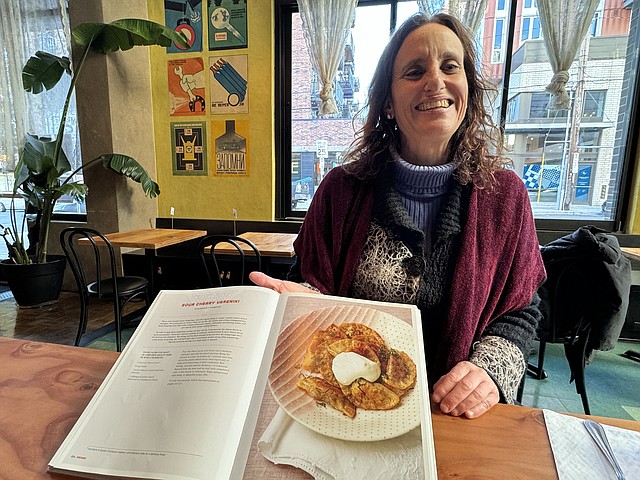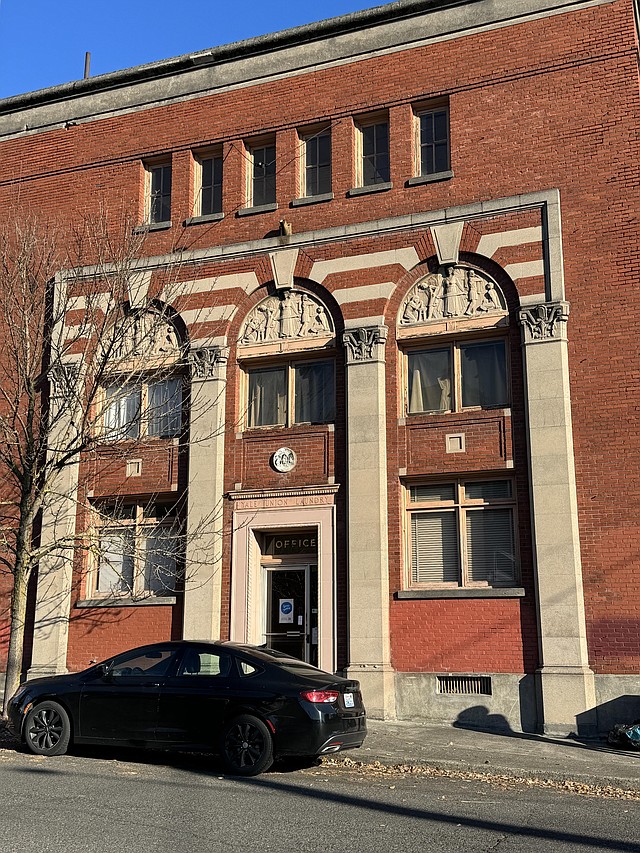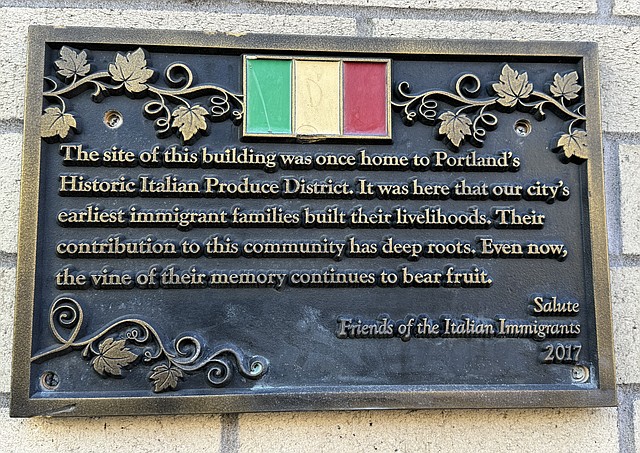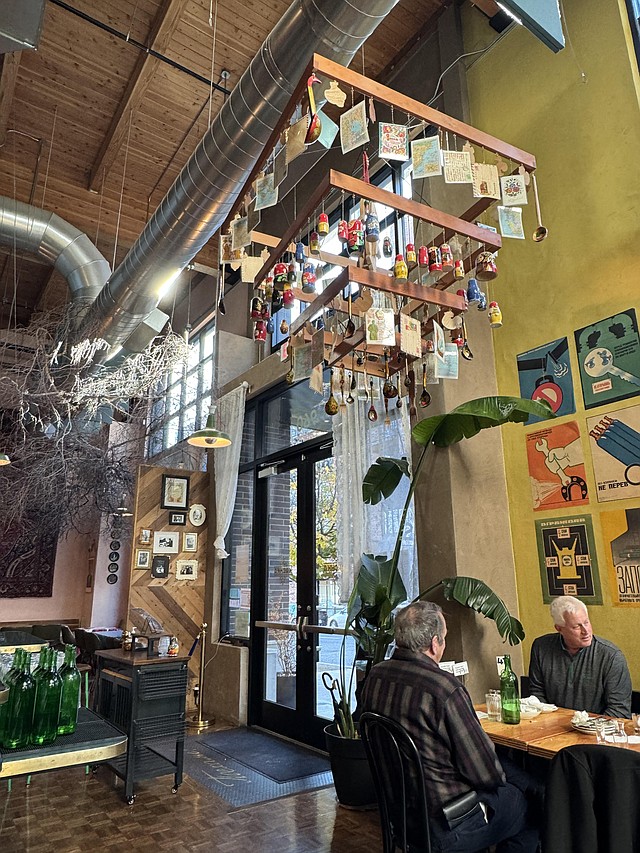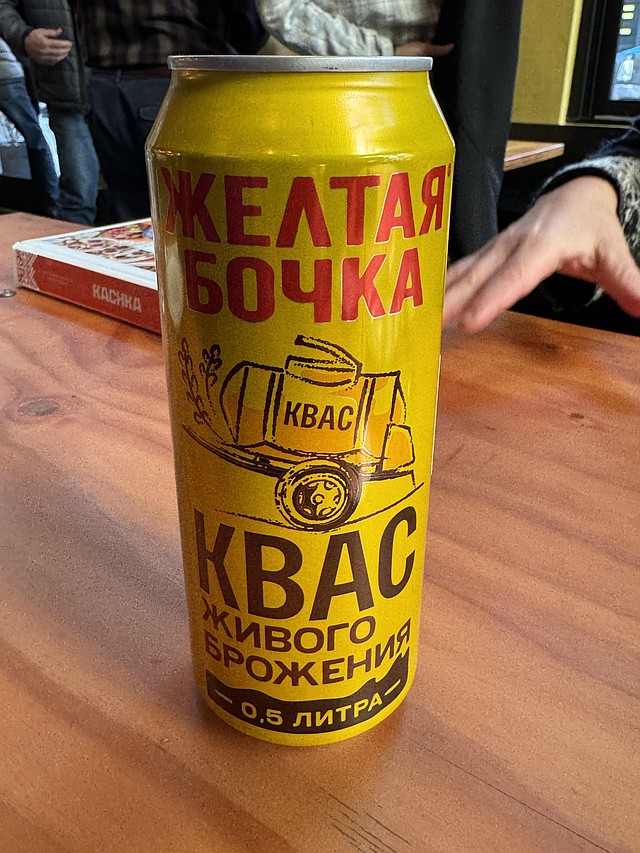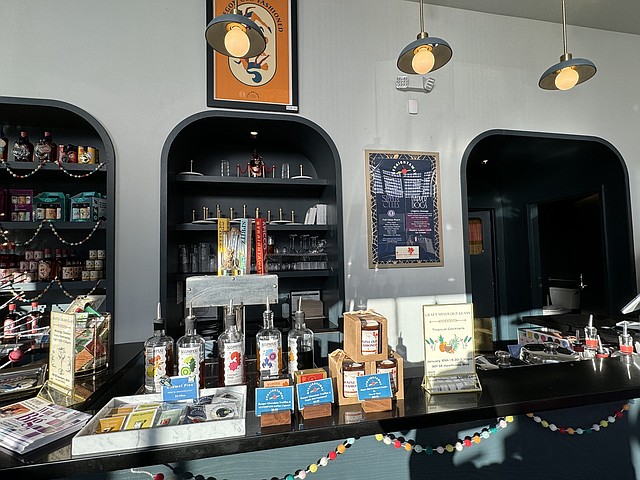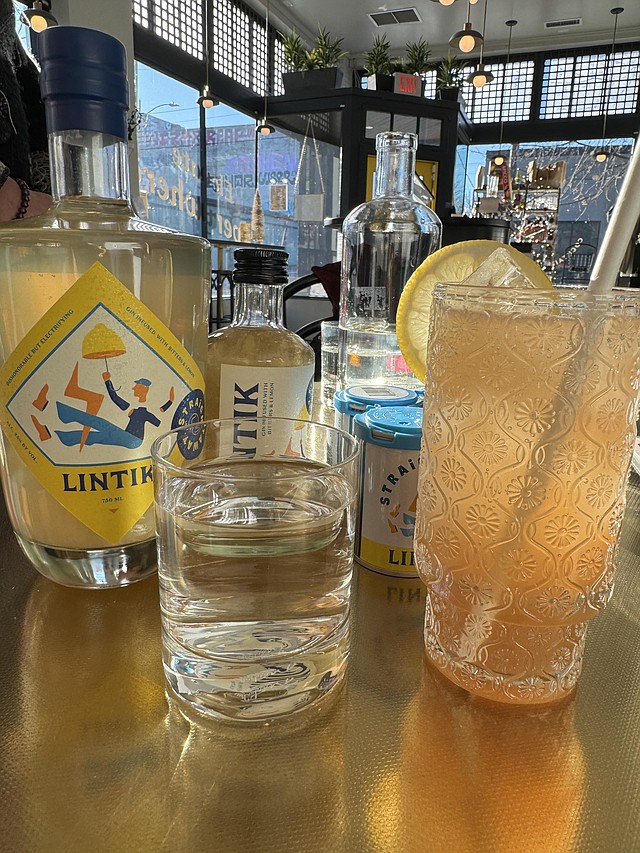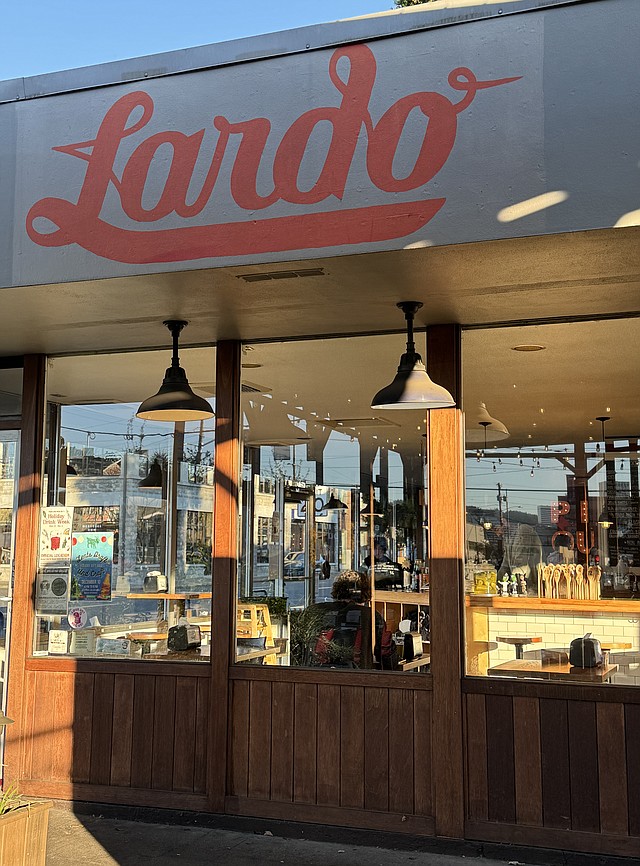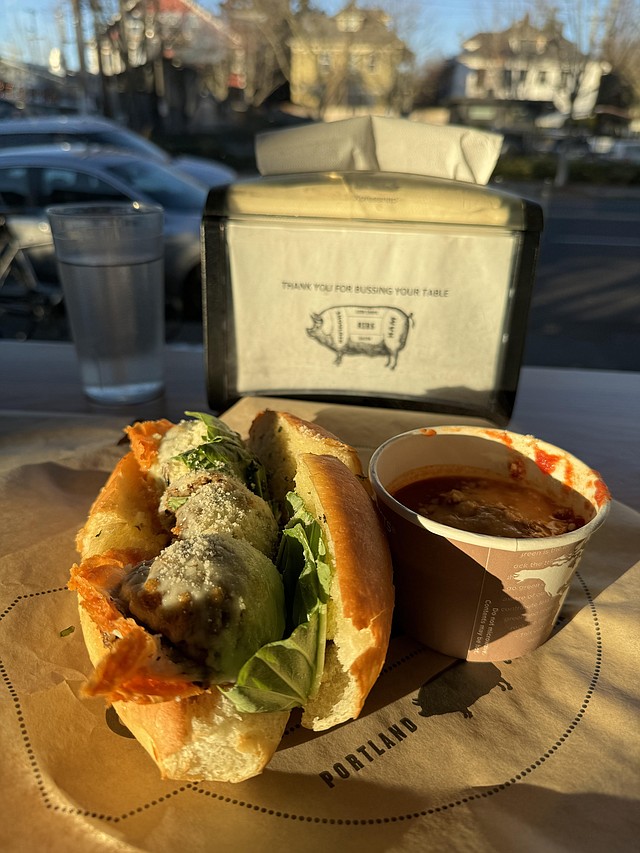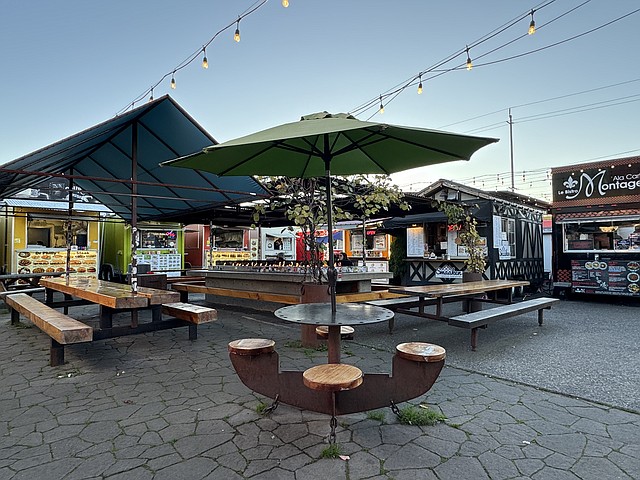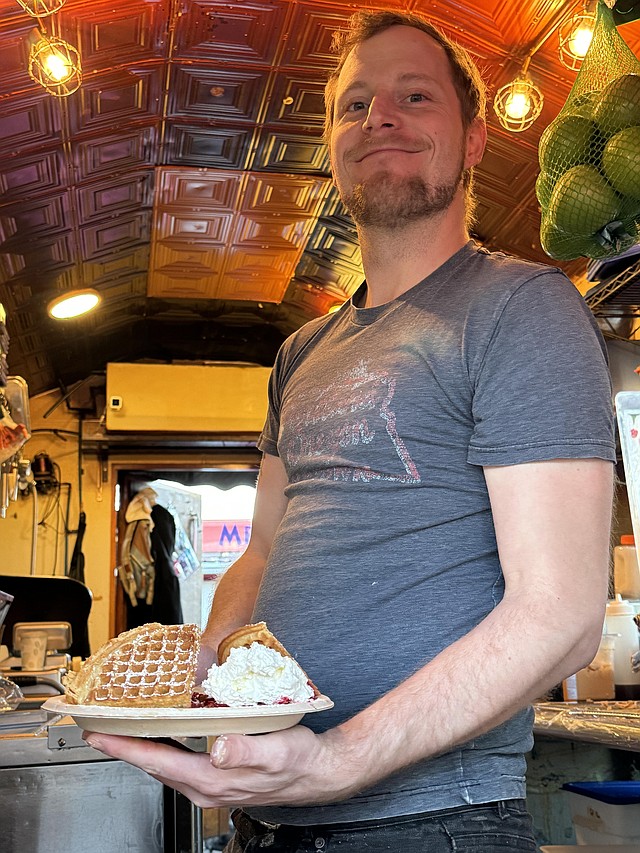Food tours are a great way to explore a city and get to know its vibe, as typically these experiences not only provide an opportunity to sample local dishes, but also offer information and insight into a community. I’ve been on a number of these forays and each time I come away with newfound knowledge and appreciation of the destination and its culinary highlights.
Portland, Oregon is well-known for its food scene and was recently ranked “second best foodie city in the country” according to WalletHub. It scored high in terms of restaurants per capita, as well as affordability and accessibility of top rated restaurants, craft breweries and wineries. It’s also a haven for gourmet specialty-food stores and coffee and tea shops, and is notable for its fresh food, featuring local ingredients and Pacific Northwest flavors. Many would claim that it’s perhaps the greatest city for food carts, too.Culinary innovation is synonymous with Portland and chefs from across the globe come here to showcase their talents. They know the liberal-minded, creative residents that call this town home are open to trying new things, embrace uniqueness and celebrate culinary artistry at its finest.The region’s abundant terroir also attracts chefs and restauranters to the Rose City. This terroir takes centerstage as it’s responsible for the abundance of fresh ingredients from land and sea.
Portland by Mouth is a highly rated food tour company in town. Owner Sherri Brown is a longtime Portland resident, who has a passion for food and her city. She is a font of knowledge about both and her tours takes visitors and locals through some of the area’s most charming neighborhoods, while tasting culinary delights from an array of locally owned eateries. Along the way, she sprinkles in plenty of fun facts about the chefs, Portland history and what makes this place special.
Portland by Mouth offers three tours: The Vibrant Kerns Hood – East Burnside and more, The Bustling Buckman Hood – Hawthorne, the Goat Blocks and more, and Brunch on Mississippi. Each includes five or six stops that feature everything from upscale markets and specialty shops to James Beard nominated establishments. The tours last from three to three and a half hours and you’ll walk an average of 1.5 miles.You’ll get a “true” bite of Portland on these tours and the experience will most likely be one of the highlights of your visit. And if you’re a local, you might be surprised at what you’ll learn about your own town (like how Portland got its name -hint: a coin toss between two men, one from Boston the other from Portland, ME), plus you’ll get a chance to discover new eateries that you’re sure to frequent again.I chose the Bustling Buckman Hood – Hawthorne, the Goat Blocks and more tour. Though I’ve been to Portland numerous times, I wasn’t familiar with this part of the city. The neighborhood, according Sherri, was once exclusively industrial, but it has undergone a Renaissance in recent years. It has come into its own as a favorite place for hipsters to live, hang out and of course eat at the diverse assortment of cafes, bistros and restaurants.
Today, the Buckman Hood is an eclectic hodgepodge - a mix of industrial, retail and some residential. You might find shops on the bottom level of a building and living spaces above. And then the next block over will be lined with charming Victorian and vintage-style homes. In regards to architecture, this too is a meld of old, historical and lovingly restored buildings alongside simply old and rundown structures.The Yale Union Laundry, for example, dates back to 1908, and is on the National Register of Historic Places. This handsome, well-preserved, brick building is designed in the Italian Renaissance commercial style with Egyptian Revival elements. It’s an excellent example of a commercial laundry built to meet the demands of the growing laundry industry in the early 20th century.
Known among Portland’s arts and cultures community as one of the town’s great historical treasures, the Yale Union Laundry is now under the umbrella of the Native Arts and cultures Foundation for the creation of the Center for Native Arts and Cultures.
Across the street is the warehouse of Gatto & Sons Produce. This local, family-owned and operated company has been providing wholesale fresh and quality produce to the area and beyond since 1915. Founder Joseph Gatto spent years delivering produce by horse and wagon before establishing the business here in what was once known as Produce Row.As for the Goat Blocks, this section of town was previously home to a herd of friendly goats, nicknamed the “Belmont Goats.” The animals were brought in as an environmentally friendly way to maintain the two-acre grass field. They were subsequently resituated in another part of the city to make way for a mixed-use development of apartments, shops and restaurants.
First stop on the tour was Hat Yai. Chef-owner Earl Ninsom, who originally hails from Bangkok, is one of the city’s most celebrated chefs and restaurateurs. He has been nominated for several James Beard Awards and has opened numerous restaurants over the years. Each time he does, the establishment rapidly rises to Portland culinary royalty. Hat Yai is no exception.
Hat Yai is a city in southern Thailand near the Malaysian border. Ninsom was inspired by the ubiquitous streetside fried chicken vendors and small curry and roti shops of this region. The chicken is the star and of course we had to try it. Each free-range chicken is marinated in spices overnight, then lightly breaded in rice flour and crisped to utter perfection. Served with a scoop of sticky rice and side of chili vinegar sauce, it’s swoonworthy. The casual, counter-service restaurant also offers a range of curry dishes and other famous southern Thailand specialties known for their bold flavors. And it prepares its fresh roti by hand every day.
Next up was Kachka, a renowned Russian restaurant owned by James Beard Award nominated Chef Bonnie Frumkin Morales and her husband Israel Morales. The name of the restaurant means duck in Belarussian and Ukrainian and is a reference to a part of Chef Morales’s family history.This multi-story mecca of Russian eats has a small deli/grocery on the top, called Kachka Lavka, where you can buy homemade charcuterie, cured fish and freshly baked Eastern European breads. As you head downstairs, the metal tables on the lounge side give the place an industrial flavor. But the nearby dining room has a homey feel to it, with colorful wallpaper and tchotchkes. There’s also a separate private dining area that transports you to a traditional Russian banquet hall.
We sampled Kback, a lacto-fermented, non-alcoholic drink made with rye bread. It tasted a bit like cream soda to me and I didn’t mind the taste. Sherri said that she gets a range of responses when she asks people on her tour what they think of the beverage. One memorable comment she heard was that it tasted like a combo of soy sauce and prunes!
Along with the Kbac, we had some sour cherry Vareniki. Similar to Pierogi, Vareniki are dumplings with a variety of sweet or savory fillings. These little pillows of dough were melt-in-the-mouth delicious and I could have easily eaten the entire plate myself.Vareniki is one of the specialties of the restaurant. Other items on the menu include such dishes as cabbage schnitzel. hot smoked black cod, caviar and roe and short rib borsch. Then there’s something called Herring ‘under a fur coat,’ which is described as being similar to a 7-layered dip in salad form, containing herring, potatoes, onions, carrots, beets, eggs and mayo. And of course, there’s more than fifty brands of vodka to accompany your meal!
Straightaway Cocktails was stop number three on the tour. Owners Casey Richwine and Cy Cain opened Straightway after years of perfecting their drink recipes for friends and family. They create drinks with one standard in mind: “I.N.M.O.T.I.M.L. I need more of this in my life.”The company specializes in “lively liquid masterpieces,” with top-tier ingredients, which you can try in its tasting room on Distillery Row. The Row boasts a large concentration of craft distilleries, eleven at last count.
Enjoy a flight of cocktails, Italian-inspired spritz, Accompani amaro/liqueur, boozy hot chocolate, or if you aren’t imbibing, a mocktail, while kicking back in Straightaway’s hip lounge. We tried one of the signature cocktails, Lintik, a refreshing concoction of gin with lemon, housemade bitters and simple syrup, and an effervescent Apicco Spritz with sparkling pinot gris, muscat and housemade bitter orange amaro.
Hand-crafted sandwiches are the focus at Lardo, stop number four. Owner Rick Gencarelli started Lardo as a food cart in 2010 and it has since morphed into one of the city’s most beloved spots. The place has gained a reputation for its innovative menu items, craft beer program and hard rock soundtrack. Currently, there are four locations: two in Portland, one in Lake Oswego and one in Las Vegas.
Among Lardo’s notable offerings are its pork-drenched double burgers, hand-cut French fries garnished with fried herbs and parmesan, the giant Pork Meatball Banh Mi, Griddled Mortadella, Italian Tuna Melt and Korean Pork Shoulder. I opted for the NO MEATball Sub, a tasty meld of roasted mushroom vegetaballs, provolone and marinara.
The tour ended at Hawthorne Asylum, a food truck pod built on the site of Oregon’s first state asylum. It’s one of numerous iconic food truck pods in Portland. The city is often credited with making food trucks popular. Back in 2008, when many brick and mortar restaurants went out of business due to the financial recession, the food truck scene really boomed. Although that was 95 years after the first food cart set up a portable shop in the city!A lot of unemployed people at the time became entrepreneurs and discovered that starting a food cart was a lot more financially feasible than opening a brick and mortar restaurant. The number burgeoned to 450 carts. Fast forward and today there are around 600 in operation. Unlike in some cities, however, the carts are not removed each night. Here they are more permanent in nature, though they still have to be able to move. A cart can often stay in the same spot for years. With so many in existence, the culinary diversity is wide ranging.
At Hawthorne Asylum, we made a beeline for Smaaken, where waffles are king. Smaaken means “tasty” in Dutch, and the Jamalicous ones we ate definitely lived up to the cart’s name. Made with raspberry jam and maple butter, then covered in a mound of whipped cream, they were heavenly.Glad I went hungry to this tour!
www.portlandbymouth.com
Debbie Stone is an established travel writer and columnist, who crosses the globe in search of unique destinations and experiences to share with her readers and listeners. She’s an avid explorer who welcomes new opportunities to increase awareness and enthusiasm for places, culture, food, history, nature, outdoor adventure, wellness and more. Her travels have taken her to nearly 100 countries spanning all seven continents, and her stories appear in numerous print and digital publications.



